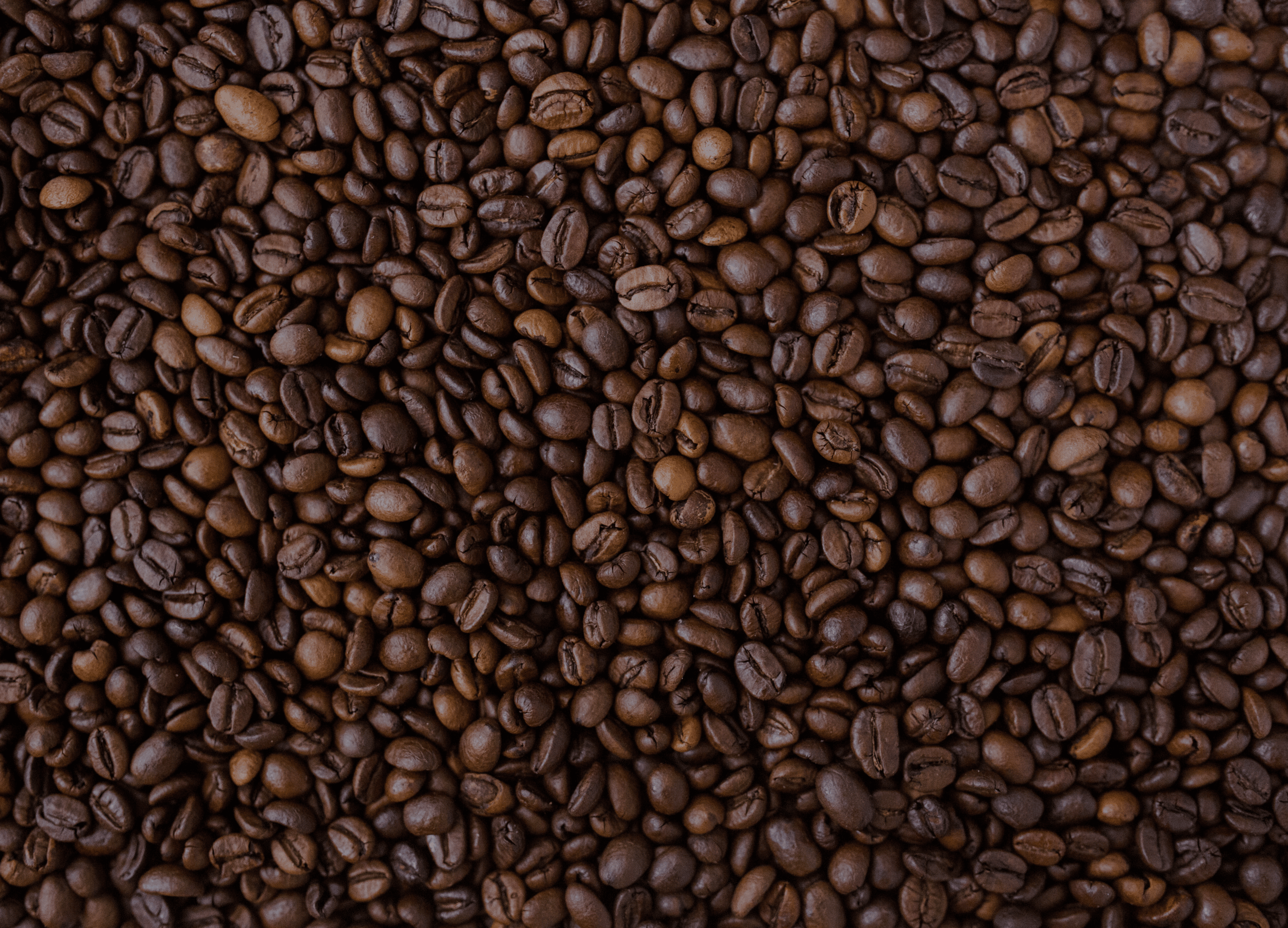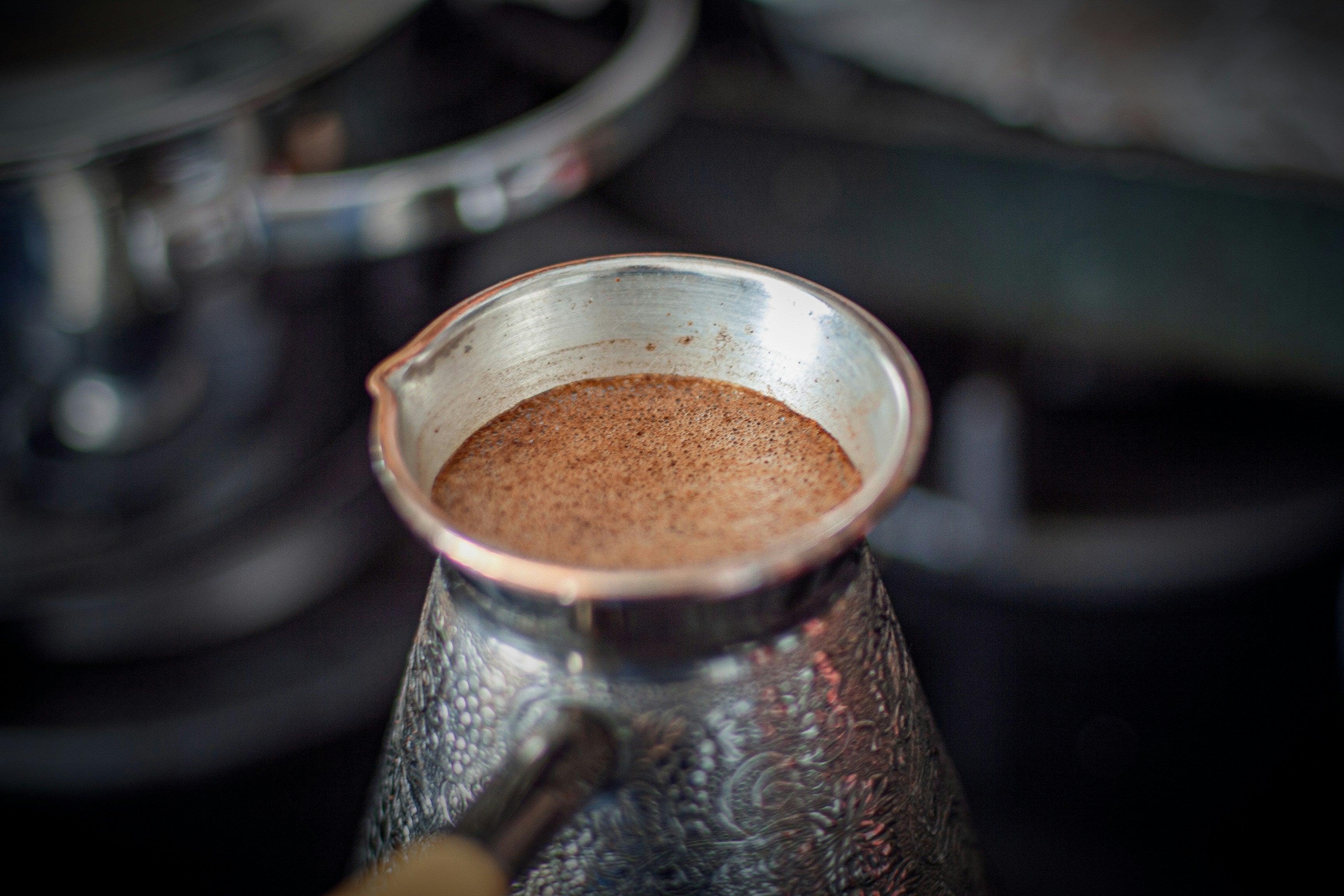✦ Brew Turkish Coffee Like a Pro ✦
The Turkish Coffee Lowdown
Turkish coffee is one of the oldest brewing methods in the world. Ground ultra-fine and brewed unfiltered in a small pot called a cezve (or ibrik), it’s known for its intense flavor, signature foam, and cultural significance. With just a few tools and some patience, you can master this timeless ritual at home.
Turkish Coffee Fundamentals
Equipment
- Cezve (ibrik) – traditional Turkish coffee pot
- Extra-fine ground coffee (pulverized to flour-like texture)
- Demitasse cups (small serving cups)
- Small spoon
OPTIONAL:
- Burr grinder capable of ultra-fine grind (if grinding whole beans)
- Sugar & Cardamom
Brew Ratio
- A 1:9 coffee-to-water ratio is a common ratio (e.g., 7g of coffee to 63g of water per cup)
- Standard: 1 heaping teaspoon of coffee per 3 oz (90mL) of water
NOTE: When it comes to water, 1 milliliter (mL) = 1 gram (g)—so measuring by volume or weight will give you the same result!
Grind Size
- Ideal Grind: Extra-fine (even finer than espresso)
- Texture: like powdered sugar or flour
- Must dissolve slightly in water—no filtering happens
Avoid Light Roasts: They tend to be too acidic and delicate for this method and can taste overly sharp or thin when unfiltered!
Water Temp
- Use cold or room-temp water to start
- Heat slowly—Turkish coffee is brewed gradually, not boiled fast

Step #1
Measure & Mix
Turkish coffee starts with combining all your ingredients in the cezve—before heat ever touches it.
Substeps:
- ADD WATER TO THE CEZVE: Measure water according to your cup size (90mL per cup) and pour into the pot.
- ADD COFFEE & OPTIONAL INGREDIENTS: Add one heaping teaspoon of coffee per cup. Add sugar (to taste) and cardamom now if using. Stir well.
- DO NOT STIR AFTER THIS POINT: Stir only once, before heating. This preserves the foam during brewing.
Useful Tips:
- Use fresh, ultra-fine ground coffee.
- Pre-measure water using your serving cup for accuracy.
- Sugar must be added before brewing—never afterward.
- Let the coffee sit briefly after mixing for better foam formation.
Relevant FAQs
Can I use espresso grind?
Yes—old coffee oils and residue can quickly ruin flavor.
Do I have to add sugar?
No, it’s optional. Traditional variations include no sugar (sade), a little (az), medium (orta), or sweet (şekerli).
Can I add spices like cardamom?
Yes—add it with the coffee before heating. It’s common in many regions.

Step #2
Heat & Watch
Slow, gentle heating is essential—this step brings the coffee to life.
Substeps:
- PLACE ON LOW HEAT: Put the cezve on the stove over low heat. Do not stir!
- WATCH FOR FOAM FORMATION: As the coffee heats, foam will rise to the surface.
- REMOVE BEFORE BOILING: Just before it boils (as foam nears the edge), remove from heat.
Useful Tips:
- Patience is key—don’t rush this step.
- Watch closely: boiling kills the foam and flattens flavor.
- You can briefly return it to the heat for a second rise if desired.
- A rich foam is a sign of good technique.
Relevant FAQs
How long does it take to brew?
About 3–4 minutes over low heat, but this can vary based on stove and pot size.
What if it boils?
If it accidentally boils, you can still drink it, but you’ll lose the traditional foam and some flavor nuance.
Can I make more than one cup?
Yes! Use one heaping teaspoon of coffee per serving and scale up water and sugar accordingly.

Step #3
Pour & Settle
Serving is delicate—this step preserves the foam and respects tradition.
Substeps:
- POUR SLOWLY INTO CUPS: Pour gently to preserve the foam on top of each cup.
- DIVIDE THE FOAM EQUALLY: Use a spoon to help share foam evenly if needed.
- LET GROUNDS SETTLE: Wait a minute or two before sipping so the grounds can settle.
Useful Tips:
- Don’t swirl or stir once served.
- Turkish coffee is sipped slowly—grounds remain at the bottom.
- Serve with a glass of water and a small sweet like Turkish delight.
- Let the experience unfold—it’s part ritual, part coffee.
Relevant FAQs
Why wait before drinking?
Waiting allows the grounds to settle so you don’t drink sediment.
Can I strain the grounds?
No—Turkish coffee is unfiltered by design. The grounds are part of the tradition.
How should I serve it?
In small cups with foam on top, often with water and something sweet.

Step #4
Clean & Store
Caring for your cezve and tools keeps tradition alive.
Substeps:
- RINSE WITH WARM WATER: Clean the cezve and cups with warm water and mild soap.
- DRY COMPLETELY: Let all parts air dry before storing.
- STORE COFFEE AIRTIGHT: Keep your ground coffee in a cool, dark place.
Useful Tips:
- Don’t let grounds dry in the cezve—it’s harder to clean.
- Use a soft sponge to preserve the finish.
- Avoid dishwashers unless your cezve is labeled safe.
- Replace your ground coffee regularly for optimal flavor.
Relevant FAQs
Can I use the cezve on an electric stove?
Yes—just use a heat diffuser if the base is small.
How do I clean out stuck grounds?
Soak in warm water for a few minutes, then rinse.
Should I season my cezve?
Not necessary, but some users rinse it with coffee before first use to reduce any metallic flavor.
Perfect Picks for Turkish Coffee


Still Have Questions?
Don’t worry—we’re here to help! If something’s not quite clicking or you’re just looking for extra brewing clarity, our Brew Crew is just a message away.




























































